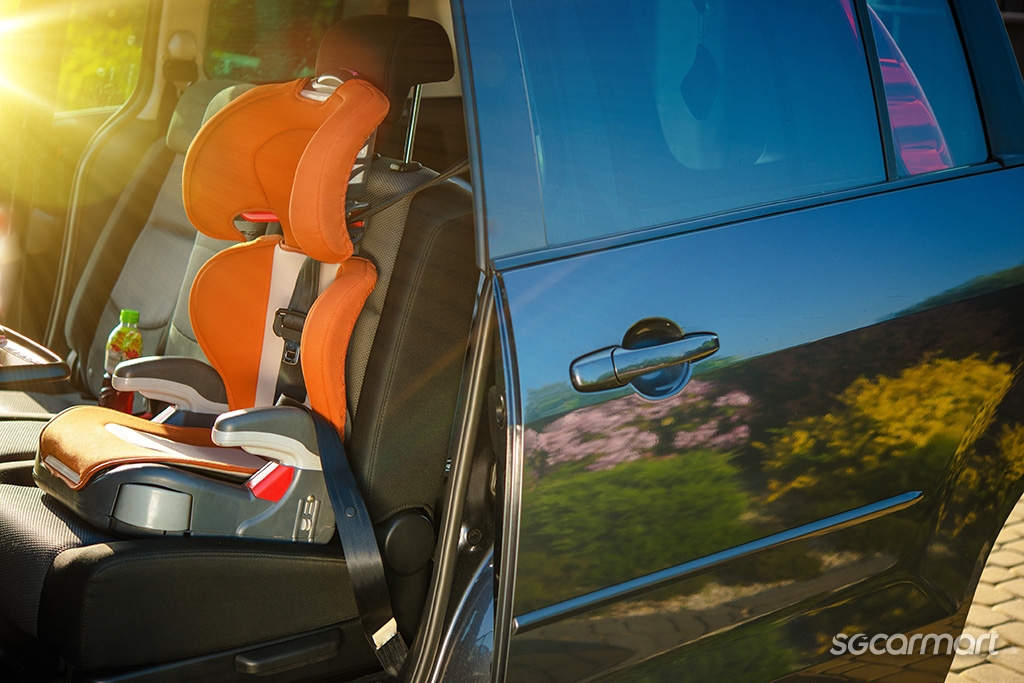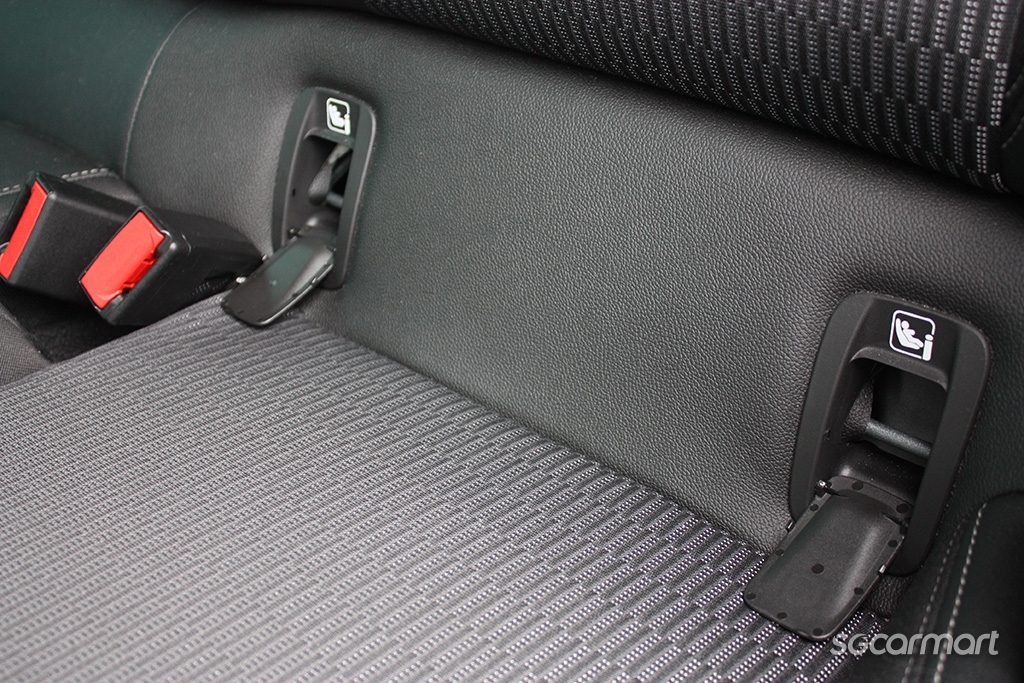How can we make car rides safer for child passengers?

We've explored at length the legal requirements of having child passengers in moving vehicles. Even as Singapore's Road Traffic Act is among some of the most stringent in the world, having modelled after the UK's, legislation isn't infallible. Regulations also don't progress at the same pace as technology does, owing to red tape and the bureaucracy that typically goes into law making.
Simply abiding by the law isn't sufficient to keep the little ones safe on the roads. It's also about the best practices we choose to adopt.

The height and weight of your child passenger may be the most important consideration when buying a car seat, but it should not be the only factor
The surest way to safeguard child passengers is to use well-fitting car seats. Finding the right one though, can be overwhelming because of all the factors you have to consider: Vehicle type, budget, and etc. And the most important of them all — the height and weight of your baby, toddler, or child passenger.
In this piece, we help you take apart the whirlpool of information and arm you with staple knowledge on how you could make car rides safer for children.

So you set out on a mission to hunt down the car seat. You punch in your search on the internet and a wave of results inundate you within seconds. Where do you start?
Instead of learning about the various types of car seats based on what they are called, it's easier (and more critical) to begin by understanding the orientation with which they should be placed. This is because the direction of the car seat has implications on safety.

Counterintuitive as it may sound, experts recommend keeping car seats rear facing during a ride.
According to an article published in 2008 in a medical journal, Pediatrics, this can protect children aged between one and two years old, five times more than if they were to sit forward facing.

In the event of an accident, rear-facing children are less likely to suffer from severe injuries or be killed from the impact. On this note, however, the KK Women's and Children's Hospital (KKH) advises against placing a rear-facing car seat in the front row in case an airbag is activated during a collision.
Car seats that should be kept rear facing in a moving vehicle include baby capsules and toddler car seats. This also applies to two-in-one child car seats that accommodate newborns up to toddlers.

When a child outgrows rear-facing car seats, they can move on to front-facing assisted sitting. These refer to booster seats, which are devices that position a child for a vehicle's three-point adult seat belt. Variations of boosters include high back and backless booster seats. In some cases, toddler seats also fall into this category.
So when do you transition a child from the rear to the front? Subject matter experts suggest it is best to let the little ones sit facing the rear until they are at least four years old.

Whether your child passenger uses a rear-facing or front-facing car seat, they will have to be secured with an additional restraint to reduce forward movement of the seat. This also helps with mitigating the effects of common mistakes that cause a car seat to be loosely installed.
In the world of car seats, there is no one-size-fits-all. Every car seat has a different height and weight limit, and even these differ depending on the manufacturer's design. Just like when you pick out clothes for your children, the most important compass when choosing car seats should remain your child's developmental readiness.

Check the height and weight indications of the car seat then fit it against your child to see if it snugly secures him or her in place. One way to "fit check" is to simulate harnessing your child in a car seat.
Step 1: Buckle your child up in the car seat.
Step 2: Confirm if the internal harness is securely tightened and placed near enough to your child's body.
For a clearer idea on how to do this, watch this video courtesy of BeSafe - an established Norwegian car seat producer. You should follow these same steps to tighten the internal harness of a car seat properly.
[embed]https://www.youtube.com/watch?v=0SWkeQjOSLY[/embed]
While there is no checklist for when a child can move on to the next restraint system, it wouldn't hurt to have some milestones as reference points.
In general, the three main styles of car seats include: baby capsules (or infant carriers) for newborns to one-year-olds; toddler car seats for six-month-olds to four or five-year-olds; and high-back boosters for four-year-olds and above.
Knowing how to install a child car seat the right way is just as important as identifying the appropriate one. What else should you do to protect your child passenger?
Did you know that child car seats will not serve their purpose if installed incorrectly? Each time a child seat is moved from one car to another, you should make sure the seat is (re-)fitted securely. The foolproof method is to take guidance from the manufacturer's instruction manual.
Some car seats can be secured with a seat belt, whereas others can be anchored via the ISOFIX points. To note, it isn't a device - the ISOFIX is an internationally standardised fastening method that tethers a child seat to a bracket at the base of the vehicle's seat.

ISOFIX-compliant car seats are affixed to anchorage points via two rigid connectors. Certain types of ISOFIX seats also feature a top tether strap that can be used to hold the seat in place to minimise rotation or movement.
While non-ISOFIX seats have little structural difference from those compatible with the ISOFIX system, the latter removes the variable of erroneous installation. With ISOFIX seats, there is no possibility of the seat belt applying the wrong amount of tension, or having run the seat belt through the wrong points on the child seat.

Not all car seats are ISOFIX-ready, however. So do remember to look in the backseat of your car for the metal anchor points before purchasing an ISOFIX-compliant car seat. If your car is ISOFIX-enabled, you will identify the anchor points by the metal clips (usually a pair of them) nestled between the cushions of your rear passenger seats.
On a side note, when using baby capsules, its carrying handle should always be kept in an upright position. This is so that it doubles up as a roll-bar that prevents rotations, in the event of a rear collision.

Electronic devices may be a convenient source of entertainment for children on-board but they can cause injuries if left unsecured during a crash
Loose, hard objects may be harmless in a stationary vehicle but can be dangerous if a collision happens. Hard objects can fly around during an impact and cause (serious) injuries to those on-board.
These days, tablets and smartphones are convenient sources of in-car entertainment for children. If these are unavoidable in a car ride, parents should put them in holders or pay extra care to wrap the devices in protector cases to cushion any impact. Otherwise, it's recommended that only soft toys be allowed in a moving vehicle.

Never underestimate the importance of positioning the headrest at the right height. Even when using car seats, it's vital to ensure the headrest is not too high or low. When adjusted correctly, the headrest helps to reduce the risk of the child's head lolling. It will also make your job of buckling up the child passenger much smoother.
The little ones, especially newborns, don't have neck muscles that are strong enough to hold their head up. As such, head lolling can cause injuries in a moving vehicle or during a crash.

Whether child passengers ride in a vehicle with you or someone else at the helm, we want to make sure they are in good hands. Since children are less equipped to fend for themselves, their safety on-board should be our priority.
So go on and put these tips and best practices to use. Be safe, and even safer in your treatment of the little ones riding with us.
ALSO READ: Pro tips for driving in the rain